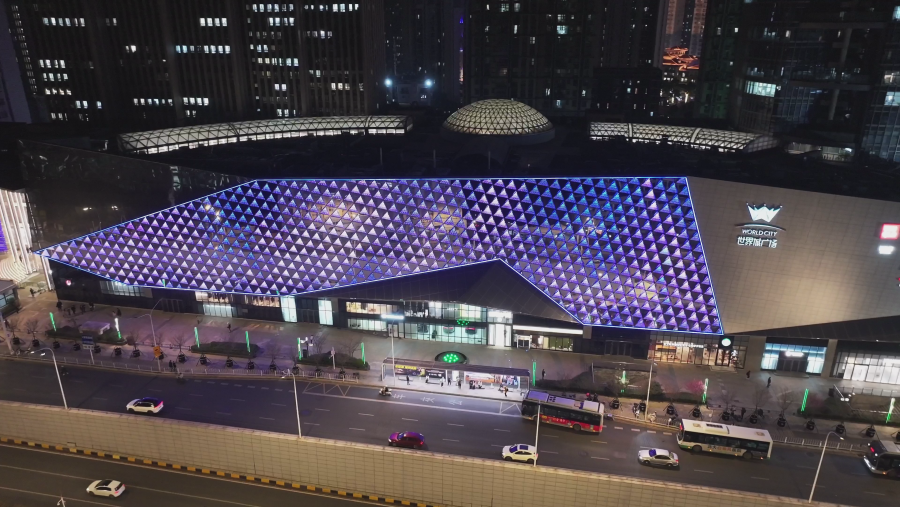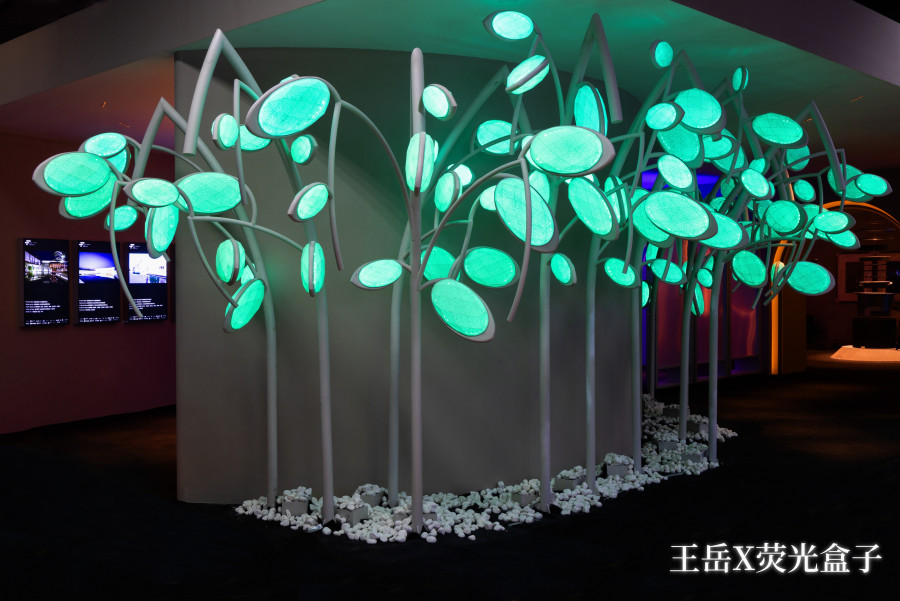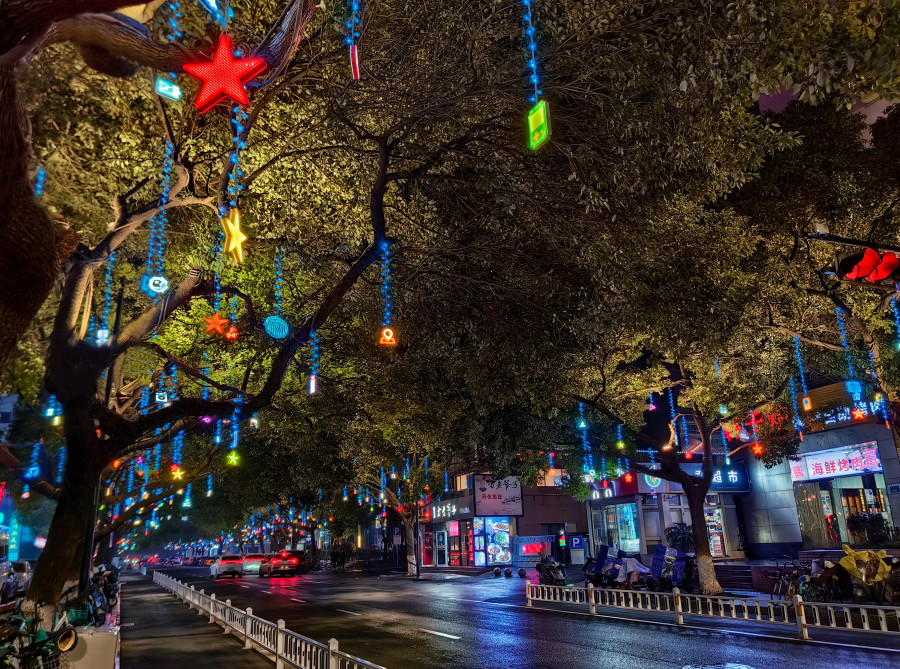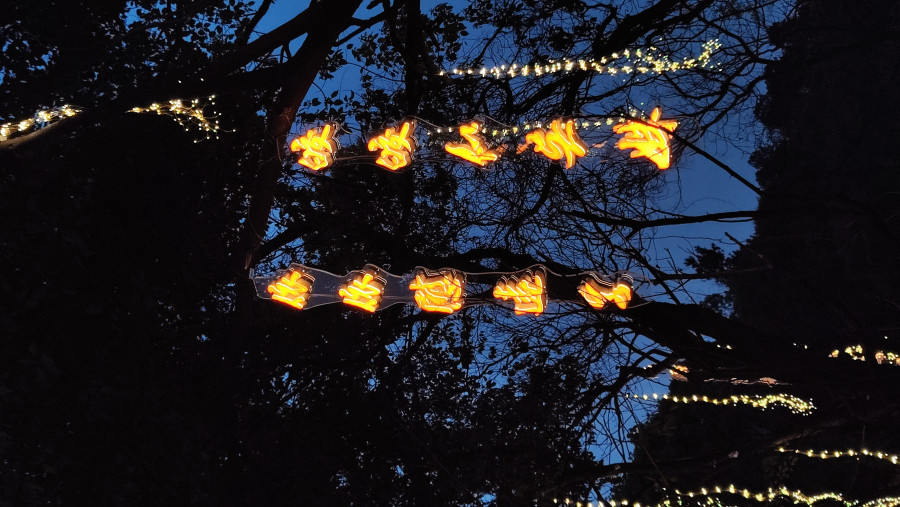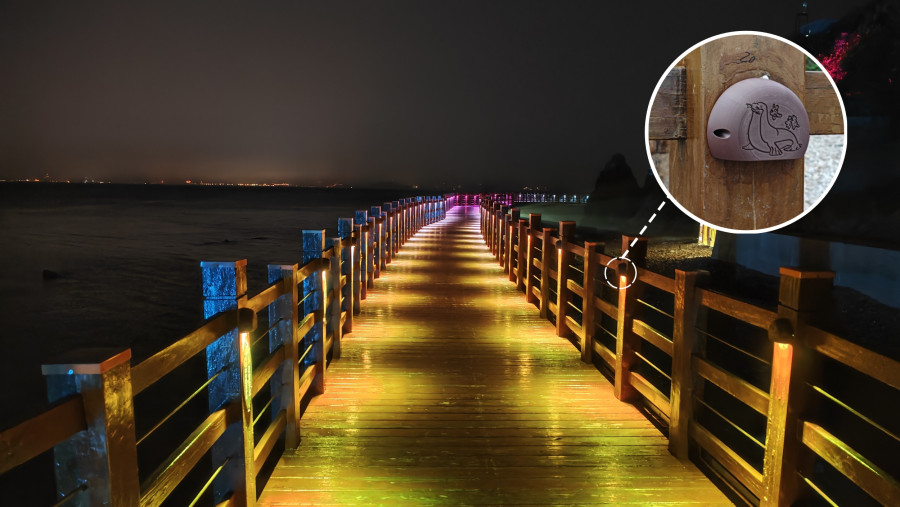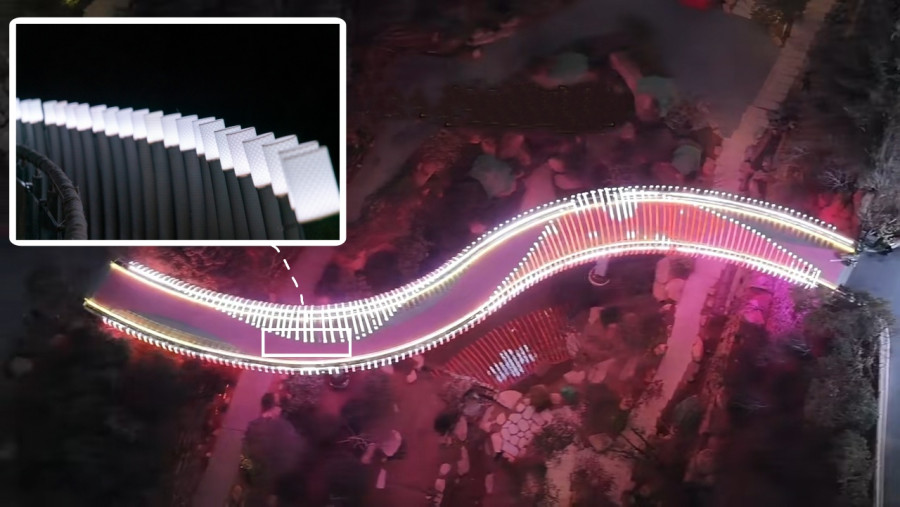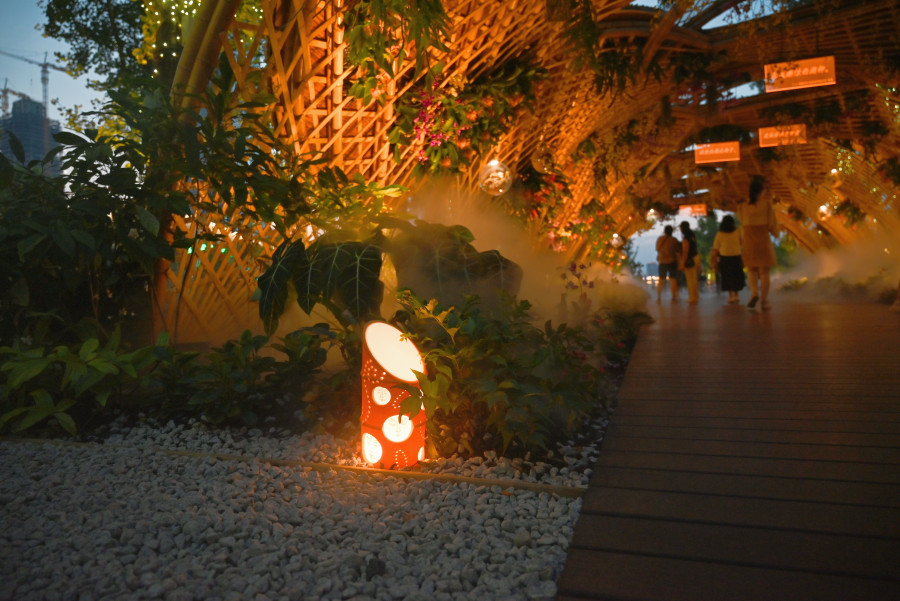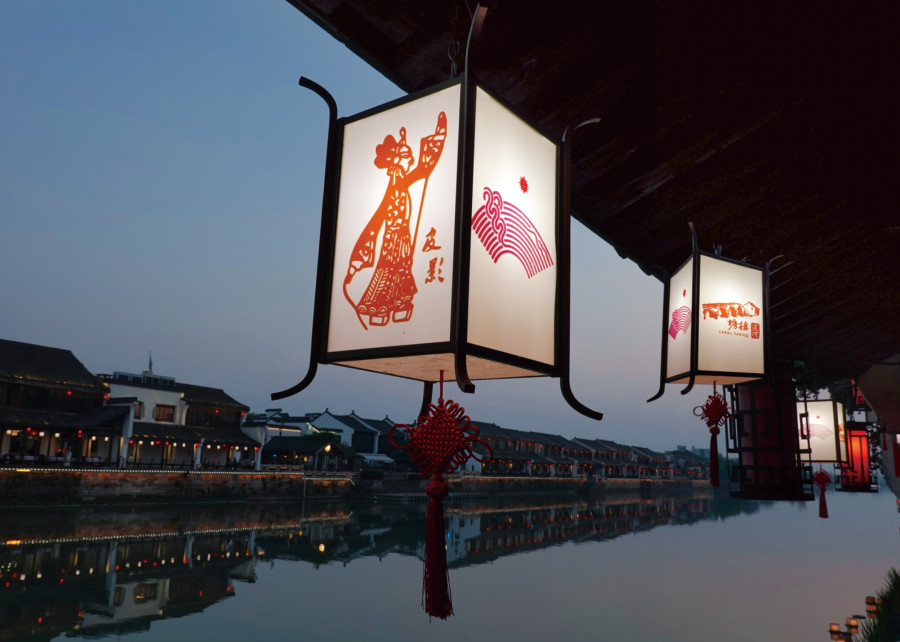In the AI era, AI modeling has significantly enhanced the efficiency of 3D printing. MMLA 3D printing polymer alloy materials, with their exceptional performance, can endure long-term use in harsh outdoor environments, truly enabling the large-scale adoption of 3D printing materials in industrial production. This sharing session focuses on the application of 3D printing in outdoor lighting, exploring how it empowers efficient and personalized lighting solutions.
Applied to building structures
Traditional architectural lighting requires the additional installation of light fixtures, whereas 3D printing enables the integration of architectural structures and light sources.
3D printing technology is being applied on a large scale to architectural curtain walls. These elements function as part of the wall by day and transform into radiant lighting fixtures by night.
The Qatar Lusail Mosque project features custom 3D-printed wooden pile components with traditional Islamic motifs. These elements serve as architectural decorations by day and emit a soft glow by night.
Applied to light sculptures
The exceptional customization capabilities of 3D printing allow lighting sculptures to transcend conventional design limitations.

· The AI-modeled "Shan Hai Jing" mermaid
The AI-modeled "Shan Hai Jing" mermaid—created through AI design and 3D printing technology, combined with an interactive control system—has set a new benchmark for interactive cultural tourism lighting.
·The Fluorescent Box Interactive Installation
The 3D-printed "leaf" component at the top of the fluorescent box interactive device underwent six iterations of modifications, with meticulous refinements to align with the design vision, ultimately perfectly realizing the designer's creative concept.
Applied to street tree lighting
3D printing goes beyond basic lighting, illuminating the cityscape with a human touch.
·Hangzhou Wensan Road Digital Street Lighting Project
A pioneering project in China, it's the first to extensively utilize 3D printing for street tree lighting. Integrating AI technology, over 1,000 unique sets of digitally-elemented luminaires were 3D printed, creating a myriad of lights and forms that embody the core identity of the city's premier Digital Life Street.
·Huzhou Xiaomeishan Poetry Path
This project utilizes 3D printing technology to create customized font effects mimicking Mi Fu's calligraphy style. It employs this technique to present fifty classic ancient poems by Su Shi, the literary giant of the Song Dynasty who had deep connections to Huzhou. This creates a culturally immersive experience of "a poem with every step."
Applied to bridges and plank roads
For specialized scenarios, 3D printing delivers highly adaptable lighting solutions.
·Yantai, Shandong: Changdao Boardwalk Lights
Located on a coastal walkway, this project features ocean-element themed lights customized via 3D printing.
·Fuzhou: Sanjiangkou Botanical Garden Orchid Bridge
Custom 3D-printed lampshades with orchid patterns were installed on the bridge's tubular structures, integrating seamlessly into the design while providing nighttime illumination.
Applied in park scenic spots
3D-printed luminous bamboo lights serve as decorative lighting within the flower park, combining aesthetic appeal with functional purpose.
·Tangqi Ancient Town: Asian Games Lanterns
This project involved creating personalized lanterns customized with Asian Games motifs using 3D printing, turning them into vibrant symbols showcasing the spirit of the Games.
3D printing is evolving from a mere 'manufacturing tool' into a 'creative engine.' In the future, it will deeply integrate with AI technology, MMLA 3D printing materials, and distributed manufacturing, further advancing landscape lighting toward achieving "zero mold costs, unlimited design freedom, and low-carbon rapid implementation.
